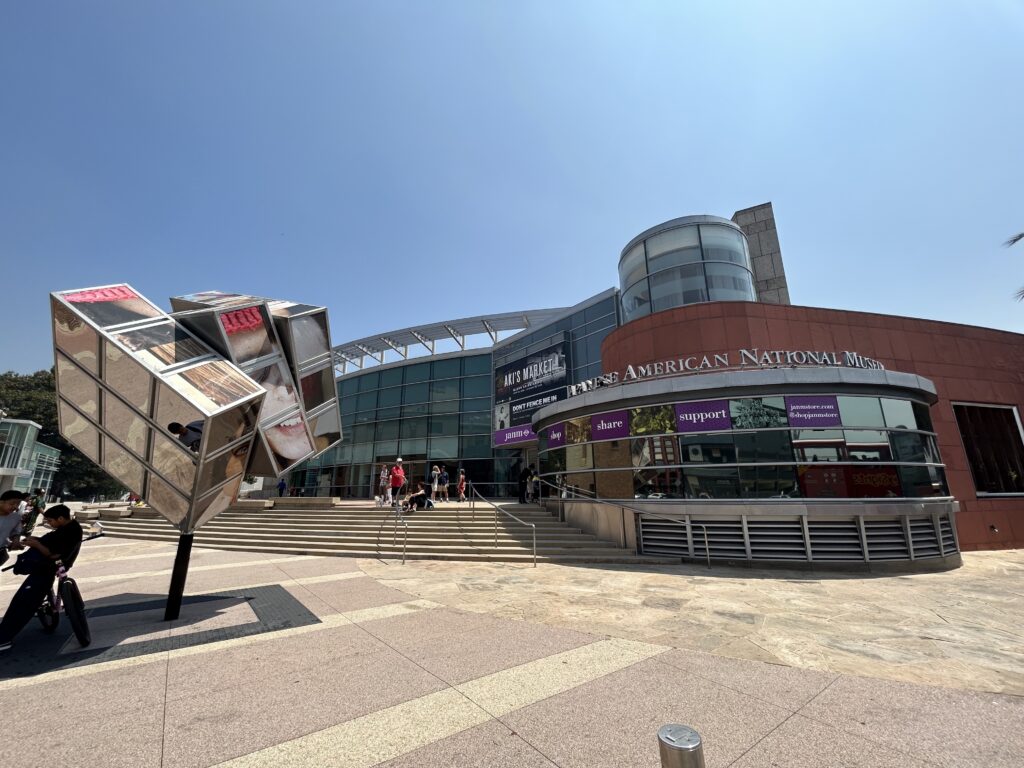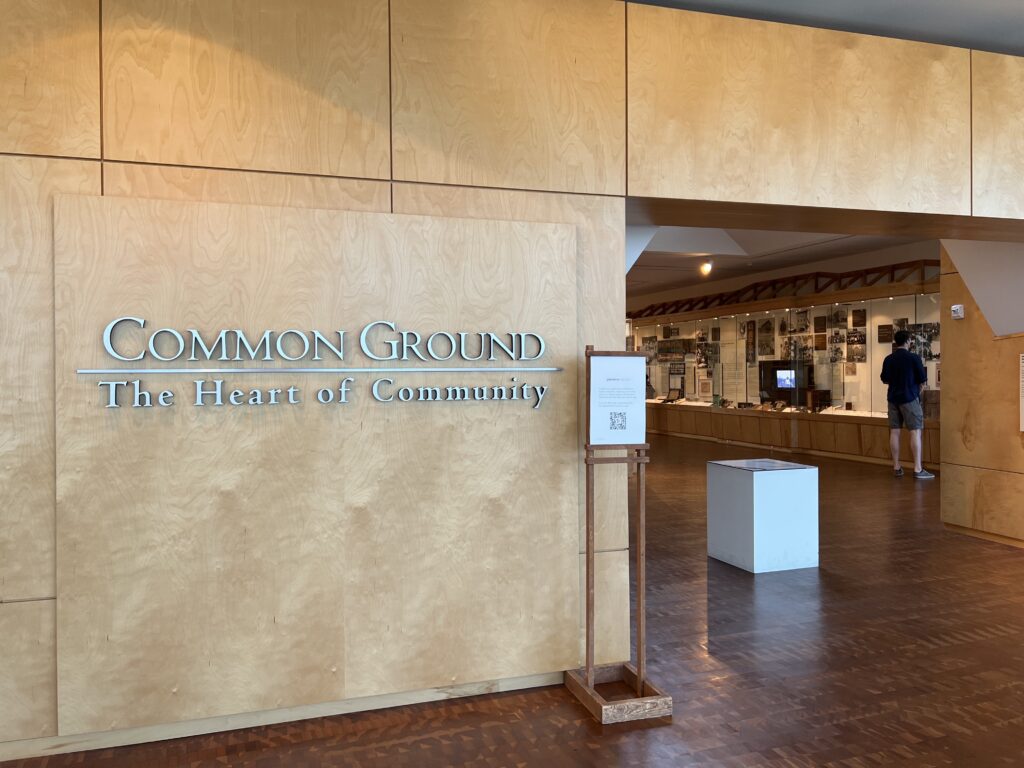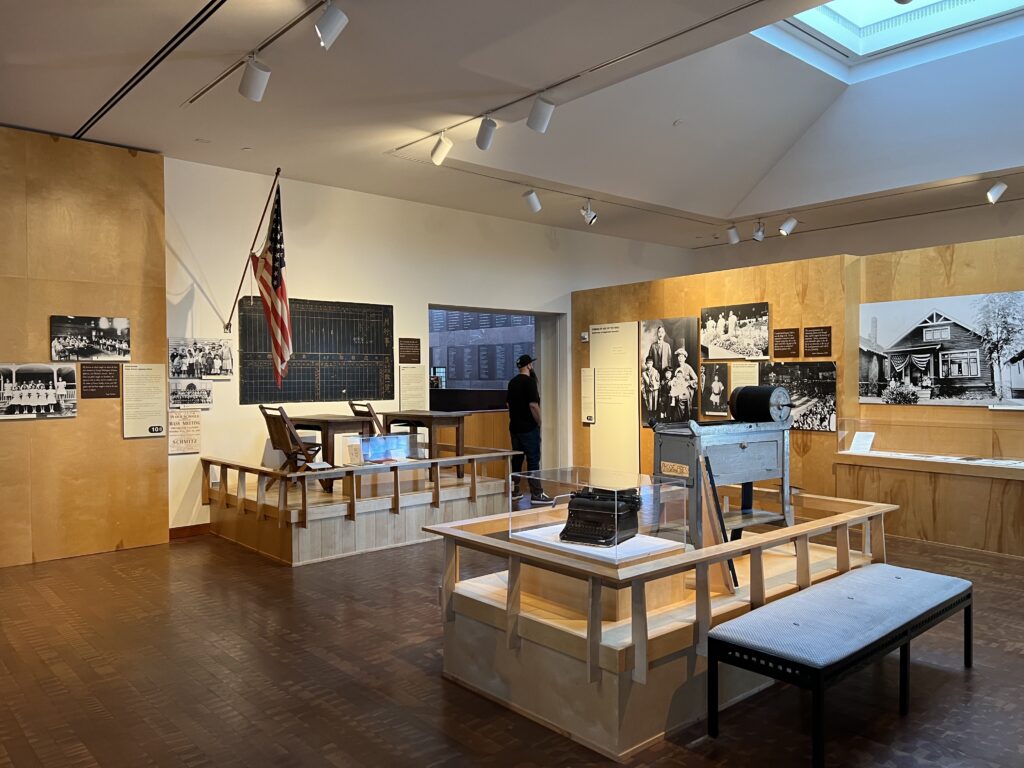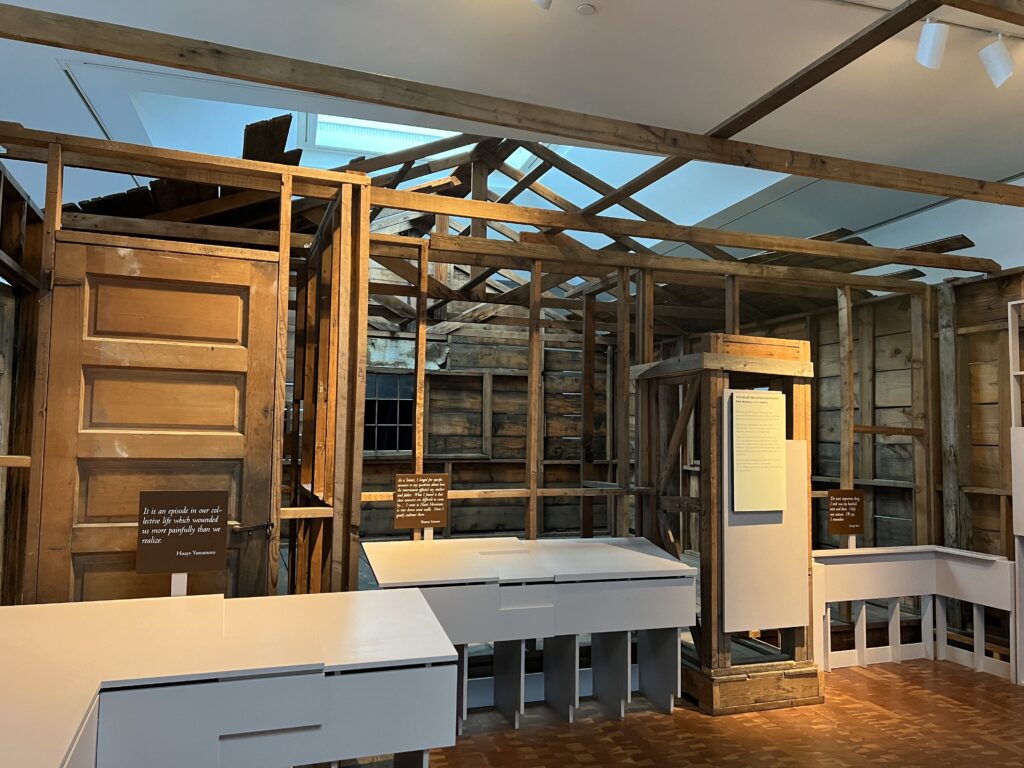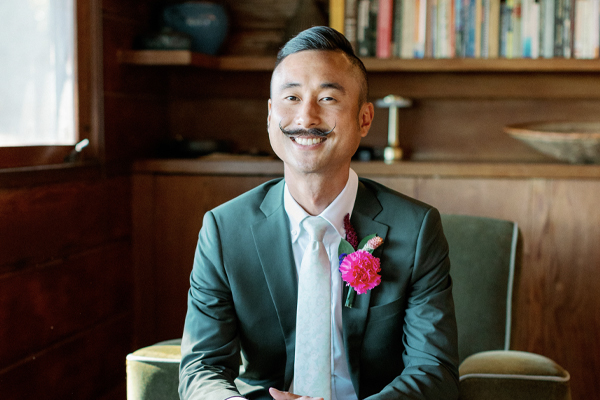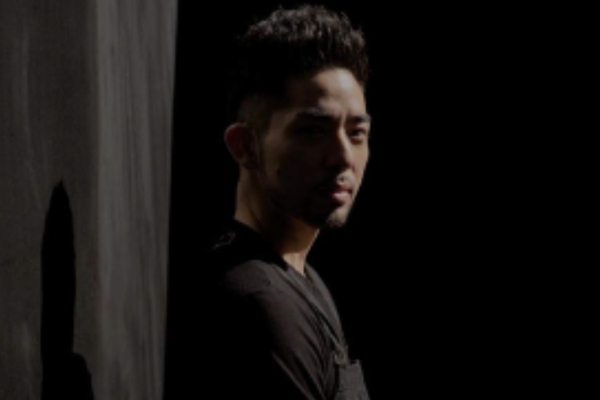Who we interviewed with……
Ms. Kristen Hayashi
Kristen Hayashi is Director of Collections Management & Access and Curator at the Japanese American National Museum. She is a public historian with experience ranging from being part of the curatorial team for Becoming Los Angeles, an exhibition at the Natural History Museum of Los Angeles County to being on the board of directors for the Little Tokyo Historical Society and Asian Pacific Islander Americans in Historic Preservation (APIAHiP). Her interest in her family history influenced her academic and professional pursuits. She earned a Ph.D. in History from the University of California, Riverside and a B.A. in American Studies from Occidental College. Her dissertation research examined the return and resettlement of Japanese Americans to post-WWII Los Angeles. Additionally, she has written several historic landmark designations, at the local and national levels, for sites that uniquely reflect the Japanese American experience.

The Japanese American National Museum (JANM) preserves and shares the history of Japanese Americans. Ms. Kristen Hayashi, who works there as Director of Collections Management & Access and Curator, grew up learning about the JANM because her father had volunteered there for many years.
Both of her great-grandparents came from Japan. Growing up as a fourth-generation Japanese American, she was very conscious of her Japanese American identity.
Her grandparents were second-generation, and she said she assumes they spoke Japanese as their first language when they were children. However, the prejudice and discrimination against Japanese Americans, especially around World War II, caused them to assimilate into American culture. Due to this, Hayashi told us she has never heard them speak Japanese.
“I think it unfortunate that the Japanese language and certain aspects of the culture have not been sufficiently passed down through the generations with my family,” she said.
Her interest in the history of Japanese Americans got sparked by the fact that both her parents were teachers, and she loved books at an early age. Her father was a high school history teacher, which led to the fact that most of the books she read at night were history books, not fairy tale picture books.
However, the interesting point here is that while they were books about US history, she didn’t see herself refected in them. “I’m even surprised that I was interested in history.”
As she grew up, all her family members built her interest in her family history. So naturally, in trying to understand where she came from, she chose to learn about history and the Japanese American experience. She started questioning how her family, as Japanese Americans, fit into these larger narratives about the United States. She went to university as a history major and wrote her dissertation on an aspect of the Japanese American community.
She wanted to know how her family had been affected by major historical events such as World War II. In fact, she even studied in Japan because she wanted to learn more about Japanese traditions and culture as well. She then visited the town in Yamaguchi Prefecture where her great-grandparents were born and met her distant relatives there.
In doing so, she recognized the difference between what she had learned by herself and the American history education she had received at school in her childhood.
She stated, “In the USA, since you’re a little until high school, you learn things as if America is an exceptional country, not a colonizing country, a country of freedom, democracy, and equality. It was not until I got older and started traveling abroad and taking college classes that I began to challenge many of the things I learned back then. When I studied in Japan, I visited a history museum there. History is all about perspectives and who has the power to tell it. There is a dominant national narrative that we learn in our K-12 education that isn’t necessarily inclusive of the nation’s diversity.
Realizing that she had learned something with a bias affected her work. She thinks her job is to elevate the stories of underrepresented or historically marginalized groups. In doing so, people are no longer looking at it from just one perspective or one lens. She believes that the more you know about different experiences, the more it helps you get clear pictures of the past.
JANM is an incredibly important institution because it’s telling an important aspect of the United States’ history that isn’t told sufficiently in mainstream museums. Additionally, she believes working at the JANM has helped her learn more about her family history. Her grandparents passed away when she was in high school or younger. Her grandparents told her a little bit about their experiences during World War II, but she never had the opportunity to ask them the questions she wanted to know. Therefore, working at the JANM with volunteers who have had similar experiences as her grandparents makes her feel like asking her grandparents those questions. Her grandparents and great-aunts donated artifacts and archival materials to the collection that tell the story of her family history.
It was really wonderful for Hayashi to be able to learn more about her family’s experiences through these materials in the collection.
It can be tragic and traumatic for many people to talk about what happened. We think what she and her family did was very brave. Her grandparents are very brave for telling their story to her, and she is brave for learning more about it by working at the JANM.
She is the director of collections, management, and access, and the curator, so she oversees the team that manages the artifact collection here, the permanent collection. She said that she and her team have the best job in the JANM because they engage with and care for the artifacts in the permanent collection, which is at the heart of everything that JANM does.
The collection at the JANM is very special because it consists of family and personal artifacts, photographs, documents, and artwork. Most of the collection represents ordinary people. In this way, people can relate to the objects. It is powerful to see a community tell its own history through the development of the collection.
Families and individuals have entrusted JANM with caring for their treasures in perpetuity. The collections that come from family donations mean a lot to JANM.
Hayashi is passionate about preserving this history and being able to use this collection to educate people about American diversity.
The JANM was built in Little Tokyo more than 30 years ago. It is an important cultural institution that brings people to Little Tokyo.
Los Angeles has the largest Japanese American population in the continental United States, and Little Tokyo in Los Angeles has always been the center of the Japanese American community. Thus, it makes sense for the JANM to be here, because it reminds people of the historical layers of history that have characterized Little Tokyo.
People might come to Little Tokyo to eat ramen or shop at the stores, and they may not think much about the history of the neighborhood or the layers of history. The JANM serves as a reminder of what is happening in this neighborhood for a reason.
Little Tokyo developed here because it has a bit of a complicated history. Los Angeles has always been diverse, but some neighborhoods in Los Angeles were segregated by race. Even though this is not the South, there were discriminatory, and homes could not be sold to people of color. People of color had no choice of where to live, and this was a way to keep white neighborhoods free of diversity. Little Tokyo, however, had no such restrictions. That is why many Japanese immigrants settled here.
Even though it was called Little Tokyo, it was diverse. People of other races lived here. For a long time, this area was considered an ethnic enclave and not a very desirable place to live.
One could say that there are aspects of Little Tokyo that have not changed dramatically. Or, one might argue that it has changed a lot.
From Hayashi’s perspective, what hasn’t changed is that this is still the center of the Japanese American community. People still come here to attend religious services at Buddhist temples and Christian churches, shop, and attend programs at cultural institutions. There is now the Budokan, where people can gather for many recreational activities. Thus, Little Tokyo is still a crucial place for our community, and that has not changed.
Change is inevitable. But organizations, such as the Little Tokyo Historical Society, JANM, and other cultural organizations, have been trying to document the history so that people know what came before.
She believes the JANM was started by people of her grandparent’s generation who wanted people to know about the forced removal and incarceration to ensure that this never happened again. Many of the JANM’s early supporters who experienced incarceration during World War II have passed away, and the number of survivors left is not high either. So it is necessary for the JANM to tell that history, but it is also important we learn from this history to inform the present and shape the future.
Hayashi wants everyone, regardless of whether they are Japanese American or not, to come here and gain a much broader understanding of US history and democracy through the lens of one community’s experience. She states the JANM will continue to be a significant institution for generations to come.
【Special Interview 2023】”Key People” in Little Tokyo

